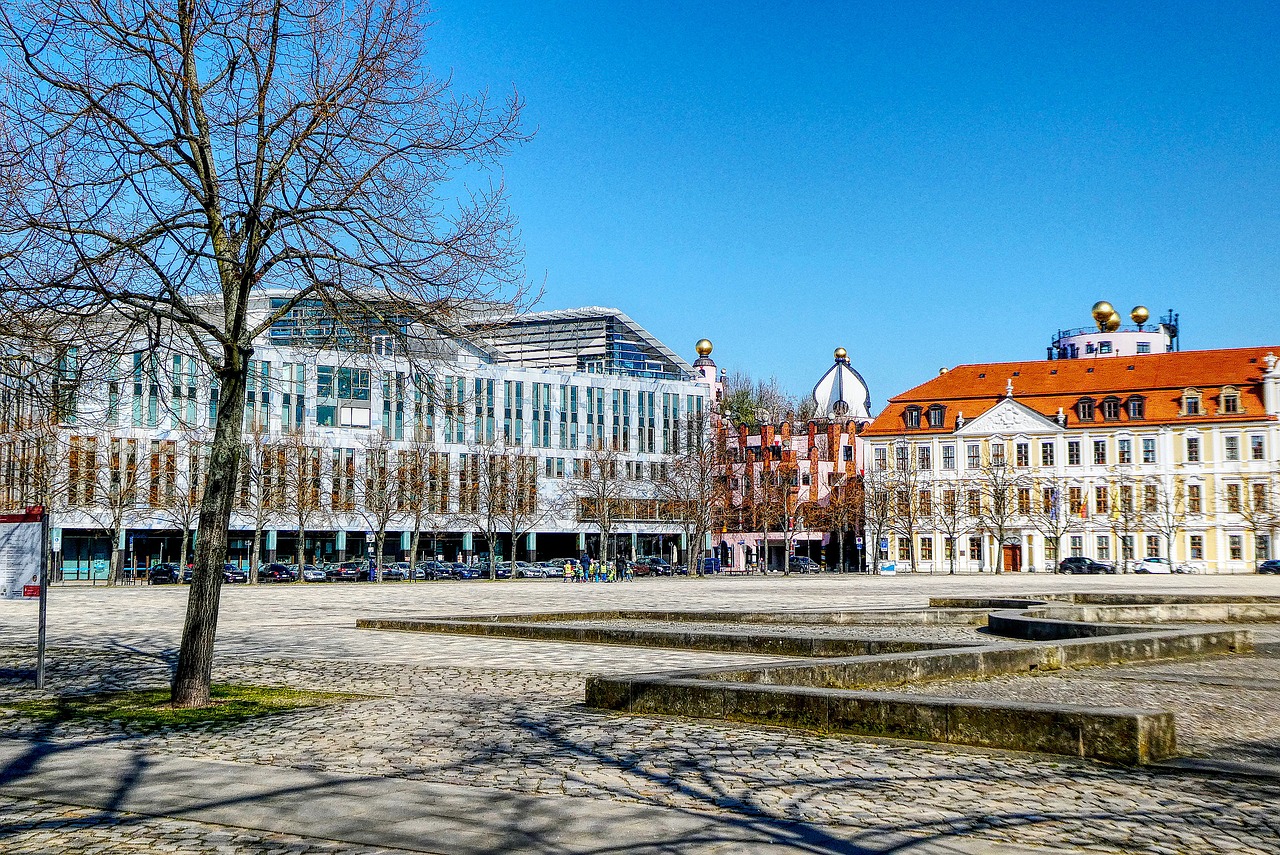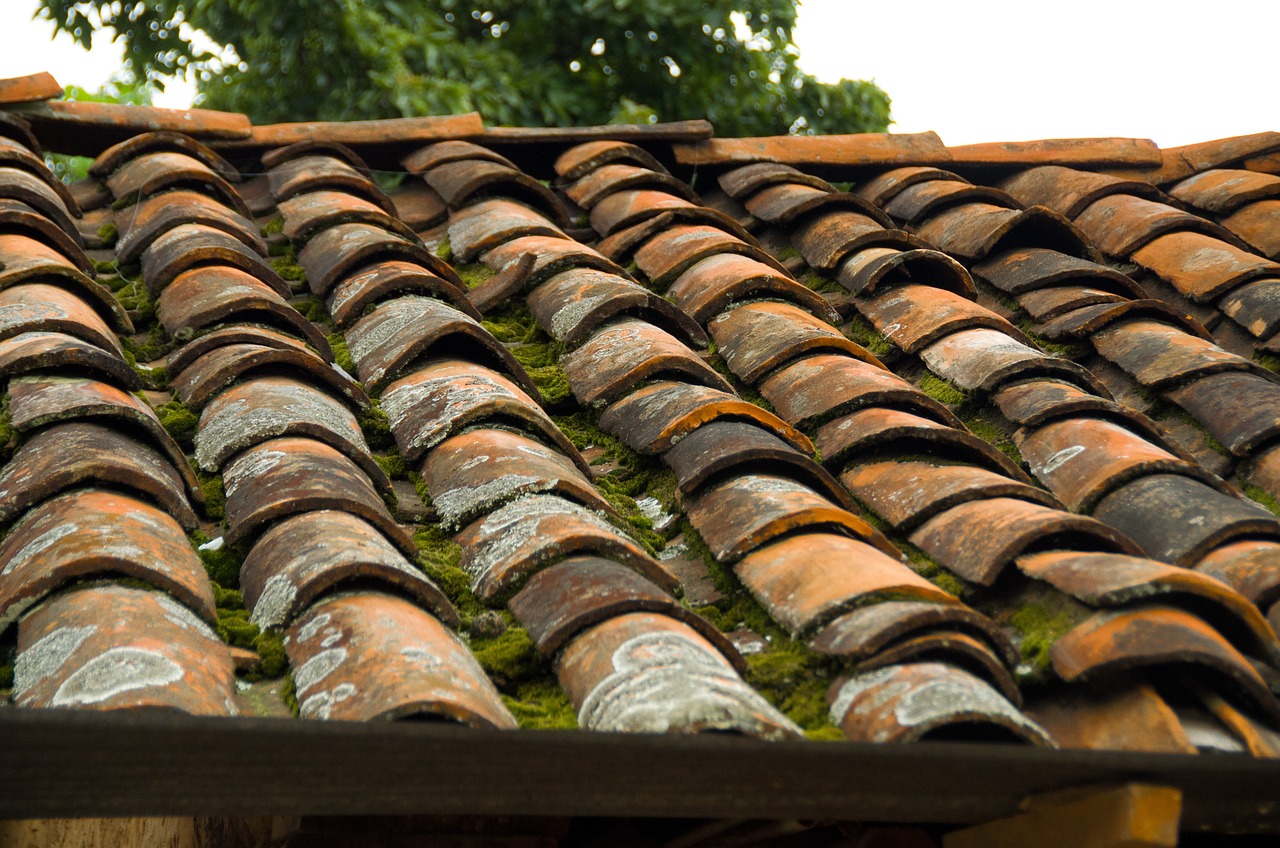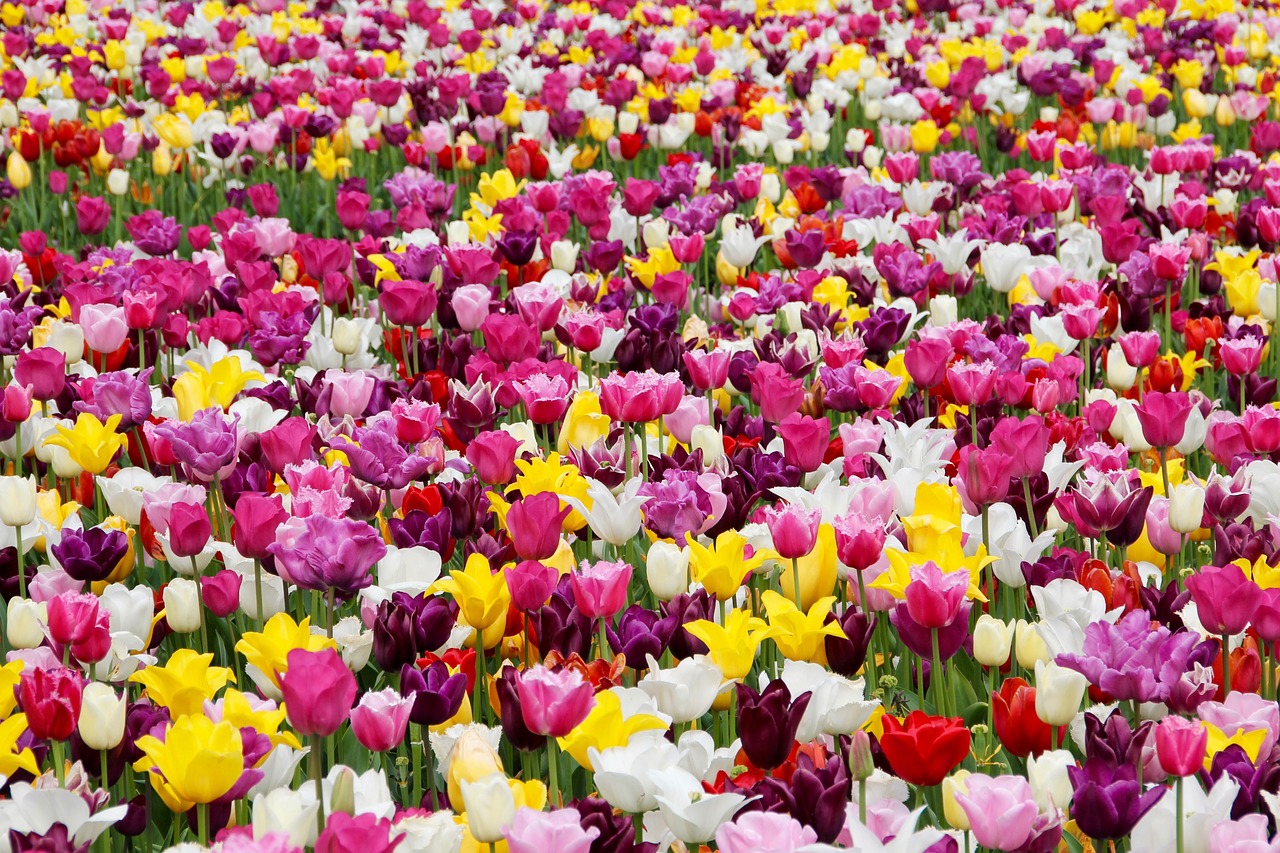Rewilding Rooftops - Urban Green Spaces as Mini Conservation Sites
Imagine stepping out onto your rooftop and being greeted not by concrete and steel, but by a vibrant tapestry of greenery, buzzing bees, and fluttering butterflies. This is the vision of rewilding rooftops, a transformative approach that turns urban spaces into thriving mini conservation sites. In a world where cities are rapidly expanding, the need for green spaces has never been more critical. Rewilding rooftops not only enhances the aesthetic appeal of our urban landscapes but also plays a pivotal role in supporting biodiversity and improving the overall quality of life for city residents.
As urbanization continues to dominate, we often forget the natural world that existed before the concrete jungle took over. Rooftops, often overlooked, are prime real estate for rewilding efforts. They offer a unique opportunity to create green havens that can support a variety of plant and animal species. By embracing this concept, we can integrate nature back into our cities, fostering environments that are not only beautiful but also functional. Think of rooftops as tiny ecosystems, capable of sustaining life while providing a sanctuary for both wildlife and humans alike.
Furthermore, the benefits of rewilding rooftops extend beyond mere aesthetics. These green spaces can significantly improve urban living conditions. They help to combat the urban heat island effect, where cities become significantly warmer than their rural surroundings due to human activities. By incorporating vegetation into our rooftops, we can cool down our cities, reduce energy consumption, and create a more pleasant environment. It's like adding a breath of fresh air to an otherwise stuffy atmosphere.
Moreover, rewilding rooftops can enhance stormwater management—a pressing issue in urban areas prone to flooding. Green roofs can absorb rainwater, reducing runoff and minimizing the risk of urban flooding. This is not just a benefit for the environment; it’s a practical solution to a problem that affects many city dwellers. In essence, rewilding rooftops is about creating a harmonious balance between urban development and nature.
As we delve deeper into the concept of rewilding rooftops, we’ll explore the various strategies for implementation, the ecological benefits, and the positive impact on community well-being. This journey into urban rewilding is not just about planting a few flowers; it’s about reimagining our cities as vibrant ecosystems where humans and nature coexist in a mutually beneficial relationship. So, are you ready to transform your rooftop into a green paradise?
Urban green spaces play a crucial role in enhancing biodiversity, improving air quality, and providing recreational areas for city dwellers. Understanding their significance is vital for sustainable urban development.
Rewilding rooftops offers numerous ecological and social benefits, including increased biodiversity, reduced urban heat, and enhanced mental well-being. This section delves into why these green spaces are essential for urban environments.
Creating habitats on rooftops can support various plant and animal species, contributing to urban biodiversity. This subsection examines how these spaces can serve as vital ecosystems within city landscapes.
Choosing native plants for rooftop gardens is essential for supporting local wildlife. This section discusses the importance of selecting appropriate flora to promote biodiversity and resilience.
Rooftop gardens can attract essential pollinators like bees and butterflies. This part highlights the methods to design these spaces to encourage pollinator visitation and habitat creation.
Rewilding rooftops can mitigate the urban heat island effect and improve stormwater management. This subsection explores how these practices contribute to climate resilience in cities.
Effective design is key to successful rooftop rewilding projects. This section outlines various strategies and considerations for creating thriving green spaces on urban rooftops.
Proper soil and water management techniques are crucial for the sustainability of rooftop gardens. This subsection discusses best practices for ensuring healthy plant growth and minimizing water runoff.
Involving local communities in the design process fosters a sense of ownership and stewardship. This section emphasizes the importance of community input in creating successful rooftop rewilding initiatives.
- What is rewilding? Rewilding is the process of restoring ecosystems to their natural state, allowing nature to take its course.
- How can I start rewilding my rooftop? Begin by assessing your rooftop space, selecting native plants, and considering the needs of local wildlife.
- Are there any maintenance requirements for rooftop gardens? Yes, regular maintenance such as watering, pruning, and monitoring plant health is essential for a thriving rooftop garden.
- Can rewilding rooftops really help with climate change? Absolutely! Green roofs can help reduce heat, improve air quality, and manage stormwater, all of which contribute to climate resilience.

The Importance of Urban Green Spaces
Urban green spaces are not just patches of grass or a few trees scattered throughout the concrete jungle; they are vital lifelines for both the environment and city dwellers. Imagine stepping outside your apartment and finding a lush garden instead of a grey sidewalk. This transformation can significantly enhance our quality of life. Green spaces provide a plethora of benefits that extend beyond mere aesthetics. They play a crucial role in enhancing biodiversity, improving air quality, and offering recreational areas for city dwellers.
One of the most compelling reasons for integrating green spaces into urban planning is their ability to improve air quality. Plants act as natural air filters, absorbing carbon dioxide and releasing oxygen. In cities where pollution levels can skyrocket, having more greenery can lead to cleaner, healthier air. Studies have shown that areas with abundant green spaces tend to have lower levels of pollutants, making it easier for residents to breathe. It's like having a personal air purifier, but on a much larger scale!
Moreover, urban green spaces serve as essential habitats for various species. They create a mosaic of ecosystems that can support a diverse array of wildlife, from birds to insects. As cities expand, these green areas become increasingly important for maintaining ecological balance. Understanding their significance is vital for sustainable urban development. Without them, we risk losing the very biodiversity that makes our planet resilient.
Additionally, these spaces offer recreational opportunities that are crucial for mental and physical well-being. Whether it's a park where families can picnic, a community garden where neighbors come together, or a rooftop oasis that provides a quiet escape from the bustling city below, green spaces foster social interactions and promote community cohesion. They become places where relationships are built, and memories are made.
In summary, urban green spaces are not just a luxury; they are a necessity. They enhance our living conditions, support biodiversity, and contribute to a healthier urban environment. As we continue to develop our cities, we must prioritize these green areas to ensure a sustainable future for both people and wildlife. After all, a city without green spaces is like a garden without flowers—devoid of life and vibrancy.

Benefits of Rewilding Rooftops
Rewilding rooftops is not just a trendy buzzword; it's a revolutionary approach to urban living that brings a multitude of ecological and social benefits. Imagine transforming barren concrete into lush green spaces that not only beautify the skyline but also contribute to the well-being of city residents. By embracing this concept, we can tackle some of the pressing challenges faced by urban environments today.
One of the most significant advantages of rewilding rooftops is the enhanced biodiversity it fosters. Urban areas are often biodiversity deserts, with limited habitats for wildlife. However, by creating green spaces on rooftops, we can provide essential habitats for various species. This leads to a more balanced urban ecosystem that can support everything from native plants to birds and insects. For instance, a well-designed rooftop garden can become a sanctuary for local wildlife, offering food and shelter in an otherwise inhospitable environment.
Additionally, rewilding rooftops plays a crucial role in reducing urban heat. Cities are notorious for their heat island effect, where temperatures can be significantly higher than in surrounding rural areas. This phenomenon is primarily due to the extensive use of concrete and asphalt, which absorb and retain heat. Rooftop gardens can help mitigate this issue by providing shade and cooling the air through the process of evapotranspiration. As a result, buildings with green roofs often experience lower energy costs, as they require less air conditioning during hot months.
Moreover, the mental health benefits associated with green spaces are profound. Studies show that spending time in nature can significantly reduce stress and anxiety levels. Rooftop gardens offer a peaceful retreat for city dwellers, providing a space where they can unwind amidst greenery. Just think about it: a quick escape to a rooftop garden can transform a hectic day into a serene experience. The soothing sounds of nature, the vibrant colors of flowers, and the fresh scent of plants can rejuvenate the mind and spirit.
Furthermore, rewilding rooftops can improve air quality. Urban areas often struggle with pollution, which can lead to serious health issues. Green roofs act as natural air filters, absorbing pollutants and releasing oxygen. They can also help capture rainwater, reducing runoff and minimizing the burden on urban drainage systems. This dual function not only benefits the environment but also contributes to the overall health of city residents.
In summary, the benefits of rewilding rooftops are multifaceted. From enhancing biodiversity and reducing heat to improving mental well-being and air quality, these green spaces are essential for creating sustainable urban environments. As we continue to build and expand our cities, it is imperative that we prioritize the integration of nature into urban planning. By doing so, we can ensure a healthier, happier, and more vibrant future for all.
- What types of plants are best for rooftop gardens? Native plants are ideal as they require less maintenance and provide habitats for local wildlife.
- How can I start a rooftop garden? Begin by assessing your rooftop's structure, sunlight, and access to water. Then, choose appropriate plants and consider consulting with a landscaping professional.
- Do rooftop gardens require a lot of maintenance? While they do require some upkeep, choosing low-maintenance plants and implementing a good watering system can minimize effort.
- Can rooftop gardens help with stormwater management? Yes, they can absorb rainwater, reducing runoff and alleviating pressure on city drainage systems.

Enhancing Biodiversity
Creating habitats on rooftops is not just a trendy idea; it’s a powerful way to support a variety of plant and animal species, which in turn contributes to the overall biodiversity of urban environments. Imagine a bustling city where concrete and steel dominate the skyline, yet hidden among those structures are vibrant green rooftop gardens teeming with life. These spaces can serve as essential ecosystems, providing food, shelter, and breeding grounds for various species that might otherwise struggle to survive in urban settings.
One of the most fascinating aspects of rooftop rewilding is the potential to create mini-sanctuaries for wildlife. By designing these green spaces thoughtfully, we can attract a multitude of organisms, from insects to birds. For instance, a well-planned rooftop garden can support species such as:
- Birds: Small bird species can find refuge and nesting sites in native plants.
- Insects: Beneficial insects like ladybugs and lacewings thrive in diverse plant environments.
- Pollinators: Bees and butterflies are drawn to colorful blooms, which are crucial for their survival.
But how does this all work? The key lies in the concept of habitat connectivity. Rooftop gardens can act as stepping stones, linking fragmented green spaces across urban landscapes. This connectivity allows wildlife to move freely, fostering genetic diversity and resilience. Think of it as building a bridge for nature—one that not only beautifies our cities but also enhances the ecological fabric of urban life.
Moreover, enhancing biodiversity through rooftop rewilding offers significant ecological benefits. For example, these green spaces can help improve air quality by filtering pollutants and absorbing carbon dioxide. They also play a role in temperature regulation, reducing the urban heat island effect, which is a common issue in densely populated areas. By creating a cooler microclimate, rooftop gardens can contribute to a more comfortable living environment for city dwellers.
In summary, the act of rewilding rooftops goes beyond aesthetics; it’s a vital step towards fostering biodiversity within urban settings. By understanding the intricate relationships between plants and animals, and by implementing thoughtful designs that prioritize native species, we can transform our cities into vibrant ecosystems that benefit both nature and humanity.
Q1: What types of plants are best for enhancing biodiversity on rooftops?
A1: Native plants are ideal as they are adapted to the local environment and provide food and habitat for local wildlife. Consider plants that bloom at different times to attract various pollinators throughout the year.
Q2: How can I attract pollinators to my rooftop garden?
A2: To attract pollinators, include a variety of flowering plants, avoid pesticides, and provide water sources. Creating a diverse plant palette will ensure that there are blooms available in different seasons.
Q3: Can rooftop gardens really help with urban heat?
A3: Yes! Rooftop gardens can significantly reduce the heat absorbed by buildings, creating cooler urban environments and decreasing the need for air conditioning, which can lower energy consumption.

Native Plant Selection
Selecting the right plants for rooftop gardens is not just a matter of aesthetics; it plays a crucial role in supporting local wildlife and enhancing the overall health of urban ecosystems. Native plants are adapted to the local climate and soil conditions, making them more resilient and less resource-intensive than non-native species. By choosing plants that naturally thrive in your area, you can create a vibrant habitat that attracts a variety of wildlife, including birds, insects, and beneficial microorganisms.
One of the most significant advantages of using native plants is their ability to provide food and shelter for local fauna. For instance, many native flowering plants produce nectar that attracts pollinators such as bees and butterflies, which are essential for the reproduction of numerous plant species. Additionally, certain native grasses and shrubs offer nesting sites for birds and small mammals, contributing to the biodiversity of urban environments.
When selecting native plants for your rooftop, consider the following factors:
- Climate Compatibility: Choose plants that are well-suited to your local climate, including temperature ranges, rainfall patterns, and sunlight exposure.
- Soil Type: Understand the soil composition on your rooftop. Native plants often require less soil depth and can thrive in less fertile conditions.
- Maintenance Needs: Opt for low-maintenance plants that require minimal watering and care once established, making your rooftop garden more sustainable.
Here’s a simple table showcasing some popular native plants suitable for rooftop gardens:
| Plant Name | Height | Bloom Time | Wildlife Benefits |
|---|---|---|---|
| Black-eyed Susan | 2-3 feet | Summer | Attracts butterflies and bees |
| Wild Bergamot | 2-4 feet | Summer | Supports pollinators and hummingbirds |
| Little Bluestem | 2-4 feet | Fall | Provides habitat for birds |
| Eastern Red Cedar | 10-40 feet | Year-round | Offers shelter for various wildlife |
Incorporating native plants into your rooftop design not only fosters a sense of place but also helps to create a more resilient urban landscape. By embracing the natural flora of your region, you contribute to the ecological balance and sustainability of your city. Remember, every little bit counts when it comes to enhancing biodiversity and improving urban living conditions. So, why not start your rooftop rewilding journey with native plants? They’re not just beautiful; they’re a lifeline for our local ecosystems!
Q: Why are native plants better for rooftop gardens?
A: Native plants are adapted to the local environment, requiring less water and maintenance, and they support local wildlife, enhancing biodiversity.
Q: How do I know which native plants are suitable for my area?
A: Research local plant guides or consult with local nurseries and conservation organizations to find native plants that thrive in your climate and soil conditions.
Q: Can I mix native and non-native plants in my rooftop garden?
A: While it’s possible, it’s best to prioritize native plants to ensure that you are supporting local ecosystems and minimizing competition for resources.

Attracting Pollinators
Creating vibrant rooftop gardens isn't just about aesthetics; it's also about fostering a thriving ecosystem that attracts crucial pollinators like bees, butterflies, and even hummingbirds. These little creatures play a monumental role in our food systems and the overall health of our environment. But how do we ensure our urban green spaces become buzzing havens for these important species?
First and foremost, it's essential to understand the preferences of different pollinators. For instance, bees are particularly drawn to plants that have a strong fragrance and bright colors, while butterflies prefer flat-topped flowers where they can easily land and feed. By selecting a diverse range of plants that bloom at different times throughout the growing season, we can create a continuous food source that keeps these pollinators coming back.
Consider incorporating native plants into your rooftop garden. Native species are not only adapted to the local climate but also provide the best resources for local pollinators. They often require less maintenance and are more resilient to pests and diseases, making them a sustainable choice for urban gardening. Some excellent native plants to consider include:
- Milkweed: Essential for monarch butterflies.
- Echinacea: A favorite among bees and butterflies.
- Black-eyed Susan: Attractive to a variety of pollinators.
Moreover, the layout of your rooftop garden can significantly impact its attractiveness to pollinators. Incorporating features like wildflower patches, nectar-rich plants, and even small water sources can create an inviting habitat. A small, shallow dish filled with water and pebbles can provide a safe drinking spot for bees and butterflies, while also adding a serene touch to your green space.
Finally, minimizing the use of pesticides is crucial. Many chemicals can be harmful to pollinators, so opting for organic gardening practices will not only protect these vital species but will also contribute to a healthier urban ecosystem. By creating a welcoming environment that prioritizes the needs of pollinators, we can turn our rooftops into flourishing mini-conservation sites that enhance both biodiversity and urban living.
Q1: What types of plants are best for attracting pollinators?
A1: Native plants are ideal as they are adapted to the local environment and provide essential resources for pollinators. Look for plants that bloom at various times throughout the season to ensure a continuous food source.
Q2: How can I create a water source for pollinators on my rooftop?
A2: A shallow dish filled with water and pebbles is a great option. This allows pollinators to drink safely without the risk of drowning.
Q3: Are there any specific design tips for rooftop gardens aimed at pollinators?
A3: Yes! Incorporate a variety of plant heights and shapes, create clusters of the same species to make them more attractive, and ensure that there are sunny spots for pollinators to warm themselves.

Improving Urban Climate Resilience
Urban areas are often characterized by their concrete jungles, where heat and pollution reign supreme. However, rewilding rooftops can be a game-changer in enhancing urban climate resilience. By transforming these spaces into green oases, we can tackle the infamous urban heat island effect, which causes cities to be significantly warmer than their rural surroundings. This phenomenon is not just uncomfortable; it can lead to increased energy consumption and health risks for residents.
One of the most effective ways to combat this heat is through the strategic use of vegetation. Plants naturally cool their environment through a process called transpiration, where they release moisture into the air. This cooling effect can lower rooftop temperatures by several degrees, making urban areas more bearable during scorching summer months. Imagine walking through a city where the air feels fresher and cooler, all thanks to the greenery above your head!
Moreover, rewilding rooftops contributes significantly to stormwater management. Urban infrastructure often struggles with heavy rainfall, leading to flooding and overwhelmed drainage systems. Green rooftops can absorb rainwater, reducing runoff and allowing it to be gradually released back into the atmosphere or into the ground. This natural filtration system not only helps to prevent flooding but also improves water quality by filtering pollutants. In essence, rooftop gardens act as miniature sponges, soaking up rainwater and lessening the burden on urban drainage systems.
To put it into perspective, consider the following table that highlights the benefits of rewilding rooftops in terms of climate resilience:
| Benefit | Description |
|---|---|
| Urban Heat Island Mitigation | Reduces rooftop temperatures through plant transpiration. |
| Stormwater Management | Absorbs rainwater, reducing runoff and flooding risks. |
| Improved Air Quality | Plants filter pollutants, enhancing urban air quality. |
| Enhanced Biodiversity | Provides habitats for various species, promoting ecological balance. |
In addition to these practical benefits, rewilding rooftops also fosters a deeper connection between urban dwellers and nature. When people interact with green spaces, they tend to develop a greater appreciation for the environment. This connection can inspire individuals to advocate for more sustainable practices within their communities, creating a ripple effect that extends beyond the rooftops. So, why not turn our urban landscapes into thriving ecosystems that not only beautify our cities but also enhance our resilience against climate change?
- What is rewilding? Rewilding is the process of restoring ecosystems to their natural state, often by reintroducing native species and creating habitats.
- How can rooftop gardens help with air quality? Rooftop gardens filter pollutants from the air, improving overall urban air quality.
- Are there specific plants recommended for rooftop gardens? Yes, native plants are often recommended as they are better adapted to local conditions and support local wildlife.
- What are the costs associated with creating a rooftop garden? Costs can vary widely based on design, plant selection, and maintenance, but many find the long-term benefits outweigh the initial investment.

Design Strategies for Rooftop Rewilding
When it comes to rewilding rooftops, effective design strategies are the backbone of a successful project. Think of it as crafting a miniature ecosystem where every element plays a vital role. The first step is to assess the existing conditions of the rooftop. Is it flat or sloped? How much sunlight does it receive? What are the wind patterns? Understanding these factors is crucial because they will dictate what types of plants can thrive and how water will be managed.
One of the most critical aspects of rooftop design is soil and water management. Unlike traditional gardens, rooftops face unique challenges like limited soil depth and drainage issues. To overcome these hurdles, it’s essential to use lightweight soil mixes that retain moisture yet allow for proper drainage. Implementing a drainage layer beneath the soil is also vital, as it prevents water from pooling and ensures that plants receive adequate hydration without becoming waterlogged.
Another effective strategy is to incorporate irrigation systems. Drip irrigation or rainwater harvesting systems can significantly reduce water usage while ensuring that plants receive the moisture they need. Imagine having a system that collects rainwater from your rooftop and uses it to nourish your garden—now that’s sustainable living at its finest!
But it’s not just about the plants; community engagement plays a pivotal role in the design process. Involving local residents in the planning stages fosters a sense of ownership and stewardship over these green spaces. Consider hosting workshops or brainstorming sessions where community members can voice their ideas and preferences. This approach not only enhances the design but also builds a strong community around the rooftop garden. After all, when people feel connected to a space, they are more likely to take care of it.
Moreover, think about creating a diverse range of habitats within the rooftop space. This can be achieved by incorporating features like rock piles, logs, and water features. Each of these elements can attract different species of wildlife, turning your rooftop into a vibrant ecosystem. For example, a small pond can serve as a watering hole for birds and insects, while rock piles can provide shelter for lizards and other small creatures.
Finally, consider the aesthetic aspect of your rooftop rewilding project. Using a mix of colors, textures, and heights can create a visually appealing landscape that invites people to explore and enjoy. Utilize native plants that not only support local wildlife but also add beauty to the urban environment. After all, a stunning rooftop garden can become a beloved oasis in the concrete jungle.
In summary, the design strategies for rooftop rewilding are multifaceted and require careful consideration of various elements. From soil and water management to community involvement and habitat diversity, each aspect contributes to creating a thriving green space. By embracing these strategies, urban rooftops can transform into mini conservation sites that enhance biodiversity and improve the quality of life for city dwellers.
- What types of plants are best for rooftop gardens? Native plants are ideal as they are adapted to the local climate and require less maintenance.
- How do I manage water on my rooftop garden? Implementing a drainage system and using rainwater harvesting techniques can help manage water effectively.
- Can I involve my community in the rooftop garden project? Absolutely! Engaging local residents can foster ownership and ensure the garden meets community needs.
- What wildlife can I expect to attract? Depending on your plant selection, you may attract birds, bees, butterflies, and other beneficial insects.

Soil and Water Management
When it comes to rewilding rooftops, are the unsung heroes of this green revolution. Just like the foundation of a house needs to be sturdy to support its structure, rooftop gardens require a robust soil system to thrive. But why is this so crucial? Well, healthy soil is the lifeblood of any garden. It not only supports plant growth but also plays a pivotal role in water retention and drainage, which are essential for urban environments where space is limited.
First off, let’s talk about soil composition. A successful rooftop garden typically consists of a mix of lightweight soil that retains moisture while allowing for proper drainage. This balance is vital because too much water can lead to root rot, while too little can stress the plants. The ideal soil mix might include components like compost, perlite, and peat moss. Each of these ingredients contributes to the overall health of the garden:
| Soil Component | Function |
|---|---|
| Compost | Provides nutrients and improves soil structure |
| Perlite | Enhances drainage and aeration |
| Peat Moss | Helps retain moisture and adds organic matter |
Next, we need to consider water management. Rooftops can face unique challenges when it comes to water runoff, especially during heavy rains. Implementing a rainwater harvesting system can be a game-changer. By collecting rainwater from the roof, you can reduce the burden on stormwater systems and provide a sustainable water source for your rooftop garden. This not only helps in conserving water but also minimizes the risk of flooding in urban areas.
Moreover, using drip irrigation systems can ensure that plants receive a consistent water supply without wasting resources. This method delivers water directly to the plant roots, minimizing evaporation and runoff. It’s efficient, eco-friendly, and perfect for the often challenging conditions of urban rooftops.
In addition to these practices, regular monitoring of soil moisture levels is essential. Using moisture sensors can help gardeners determine when to water, ensuring that plants are neither overwatered nor underwatered. This technology can be particularly useful for busy urban dwellers who may not have the time to check their gardens daily.
In conclusion, effective soil and water management is not just a technical necessity; it’s a foundational aspect of creating vibrant, resilient rooftop gardens. By focusing on these elements, urban gardeners can cultivate lush green spaces that not only enhance biodiversity but also contribute to the overall well-being of city inhabitants. After all, a well-managed rooftop garden can be a sanctuary in the concrete jungle, providing a breath of fresh air and a touch of nature in our bustling lives.
- What type of soil is best for rooftop gardens? A lightweight mix that includes compost, perlite, and peat moss is ideal.
- How can I manage water runoff from my rooftop garden? Implementing a rainwater harvesting system and using drip irrigation can effectively manage water runoff.
- Do I need to monitor soil moisture levels? Yes, using moisture sensors can help ensure your plants receive the right amount of water.

Community Engagement in Design
When it comes to rewilding rooftops, the role of the community is not just important; it's absolutely essential. Imagine a rooftop garden that thrives not only because of its lush plants but also due to the passion and care of the people who helped create it. Engaging the community in the design process fosters a sense of ownership and stewardship, transforming a simple green space into a beloved neighborhood treasure. By involving local residents, we can ensure that these projects reflect the unique character and needs of the community.
So, how do we effectively engage the community in rooftop rewilding projects? It starts with open communication. Organizing workshops and meetings allows residents to voice their ideas and concerns. This dialogue can lead to innovative solutions that might not have been considered otherwise. For instance, a community might have specific plants in mind that hold cultural significance or that are particularly well-suited to the local climate. By listening to their input, we can create a garden that resonates with the community on a deeper level.
Moreover, collaboration can take many forms. Local schools could participate in educational programs that teach students about the environment and the importance of biodiversity. Imagine children planting seeds and watching them grow, all while learning about the ecosystem around them. This not only cultivates a sense of responsibility but also nurtures future environmental stewards.
In addition to workshops, we can also utilize social media platforms to gather feedback and ideas from a wider audience. Creating online polls or forums allows community members to engage at their convenience, ensuring that everyone has a voice in the design process. This digital engagement can be particularly valuable in urban settings where people lead busy lives and may not always be able to attend in-person meetings.
Finally, it’s crucial to celebrate the successes of these projects. Hosting community events, such as garden openings or seasonal harvest festivals, can strengthen community bonds and encourage ongoing participation. These gatherings not only showcase the beauty of the rooftop gardens but also highlight the hard work and collaboration that went into their creation. Seeing their efforts come to fruition can inspire residents to continue their involvement and advocate for more green spaces in the future.
To sum it up, community engagement in the design of rooftop rewilding projects is a game-changer. It creates spaces that are not only ecologically beneficial but also socially enriching. By fostering collaboration, encouraging open communication, and celebrating achievements, we can transform urban rooftops into vibrant, thriving ecosystems that reflect the heart and soul of the community.
- What is rewilding? Rewilding refers to the process of restoring ecosystems to their natural state, often by reintroducing native species and creating habitats.
- How can I get involved in rooftop rewilding projects? You can start by reaching out to local community groups or environmental organizations that focus on urban greening initiatives.
- What types of plants are best for rooftop gardens? Native plants are generally the best choice as they are adapted to the local climate and support local wildlife.
- How do rooftop gardens help with climate resilience? Rooftop gardens can reduce the urban heat island effect, manage stormwater, and improve air quality, contributing to a more resilient urban environment.
Frequently Asked Questions
- What is rewilding, and how does it apply to urban rooftops?
Rewilding is the practice of restoring ecosystems to their natural state. When applied to urban rooftops, it involves transforming these spaces into green habitats that support local wildlife, enhance biodiversity, and improve the overall quality of urban life. Think of it as giving city rooftops a second chance to thrive, much like a garden reclaiming its space.
- Why are urban green spaces important?
Urban green spaces are essential for several reasons. They help improve air quality, provide recreational areas for residents, and support biodiversity. By creating pockets of nature within cities, we can combat the negative effects of urbanization, such as pollution and heat, making our living environments more enjoyable and sustainable.
- How can rewilding rooftops enhance biodiversity?
Rewilding rooftops can significantly enhance biodiversity by creating new habitats for various plant and animal species. These green spaces can serve as crucial ecosystems, helping to connect fragmented habitats in urban areas. By planting native flora and designing spaces that attract pollinators, we can support local wildlife and contribute to a healthier urban ecosystem.
- What types of plants are best for rooftop gardens?
Choosing the right plants is vital for a successful rooftop garden. Native plants are often the best choice because they are well-adapted to the local climate and soil conditions, and they provide food and habitat for local wildlife. Additionally, consider drought-resistant plants to minimize water use and maintenance.
- How do rooftop gardens help with urban climate resilience?
Rooftop gardens play a crucial role in improving urban climate resilience by mitigating the urban heat island effect and managing stormwater. They absorb heat, reducing the overall temperature of the surrounding area, and help manage rainwater runoff, thereby decreasing the risk of flooding. It's like having a natural air conditioner and sponge right on top of our buildings!
- What are some design strategies for successful rooftop rewilding?
Effective design strategies for rooftop rewilding include proper soil and water management, selecting appropriate plants, and incorporating features that attract wildlife. It's essential to ensure that the rooftop can support the weight of the garden and that there are systems in place for irrigation and drainage. Engaging the community in the design process can also lead to more successful and cherished green spaces.
- How can communities get involved in rooftop rewilding projects?
Community involvement is key to the success of rooftop rewilding projects. Local residents can participate in the design process, volunteer for maintenance, and help spread awareness about the benefits of urban green spaces. By fostering a sense of ownership, communities can ensure these projects are sustainable and beneficial for everyone.



















